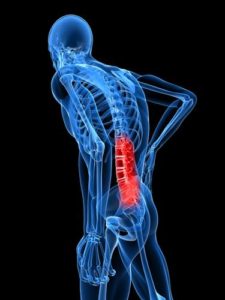 Last but not least of the spine is the lumbar spine also known as the low back. Here’s the importance and the body parts that your lumbar spine affect.
Last but not least of the spine is the lumbar spine also known as the low back. Here’s the importance and the body parts that your lumbar spine affect.
The Importance of Your Lumbar Spine
The lumbar spine is the lowest region of your spine! It’s comprised of five vertebrae (L1, L2, L3, L4 and L5) in the lower abdomen and hips, and is built for power and stability, bearing the weight of the entire torso and giving the hips and legs the ability to flex and move. It is a strong coat of armor, protecting the base of your spinal cord so it can do its job without interference.
When Your Lumbar Spine is Misaligned
Most people think of the spine in regards to posture, movement and stability, and while those are all important functions, it’s got another crucial role to play—protecting the spinal cord. Messages from the brain travel down the spinal cord, branch out into the nerves and are transmitted to the rest of the body. This is how your organs know how to function and heal.
However, when there’s a misalignment in the vertebrae of the spine, also known as a subluxation, this process is disrupted. And unfortunately, these misalignments can happen at any time; an accident, daily habits and behaviors, nutritional intake, stress and even toxins and chemicals can move your vertebrae out of place.
This puts pressure on the spinal nerves and effectively cuts off communication within the nervous system. When left unchecked, these misalignments can affect the body in unexpected ways. Take a look at each vertebra and how it connects with different organs and areas in the body. And most importantly, identify any possible symptoms that could arise from a subluxation in that vertebra!
Vertebrae; Parts of the Body; Possible Symptoms
L1; Large intestines and inguinal rings; Constipation, colitis, dysentery, diarrhea and
ruptures or hernias
L2; Appendix, abdomen and upper leg; Cramps, difficulty breathing and minor
varicose veins
L3; Sex organs, uterus, bladder and knees; Bladder troubles, painful or irregular
periods, miscarriages, bed wetting, impotency
and knee pain
L4; Prostate gland, low back muscles Sciatica, lumbago, difficult or painful
and sciatic nerve; urination and back aches or pain
L5; Lower legs, ankles and feet; Circulation problems, weak legs, ankles and
arches, cold feet and leg cramps



Leave A Comment
You must be logged in to post a comment.